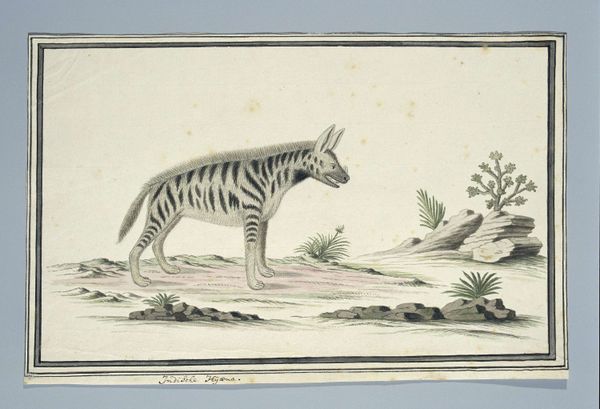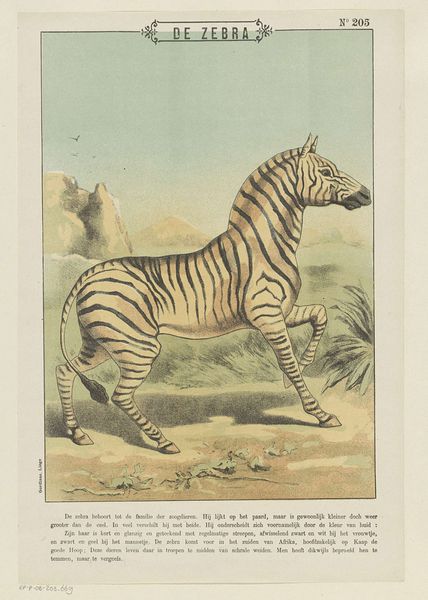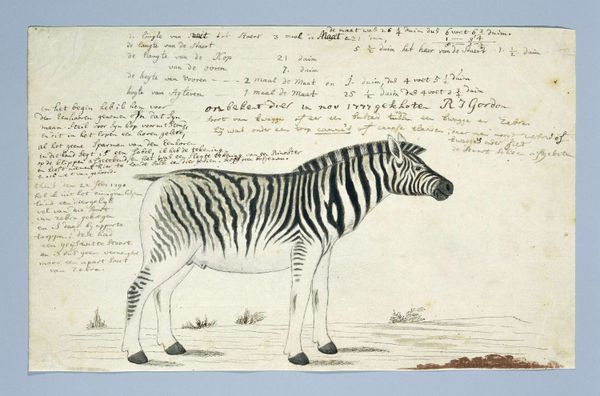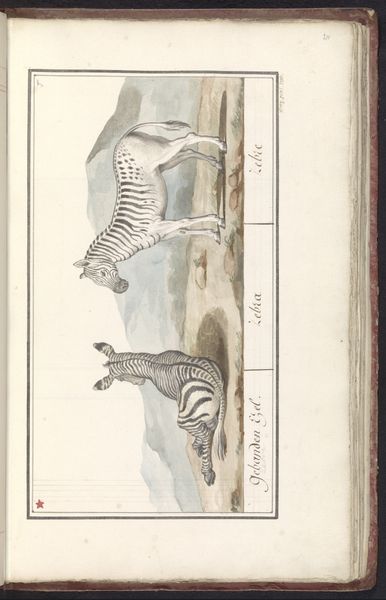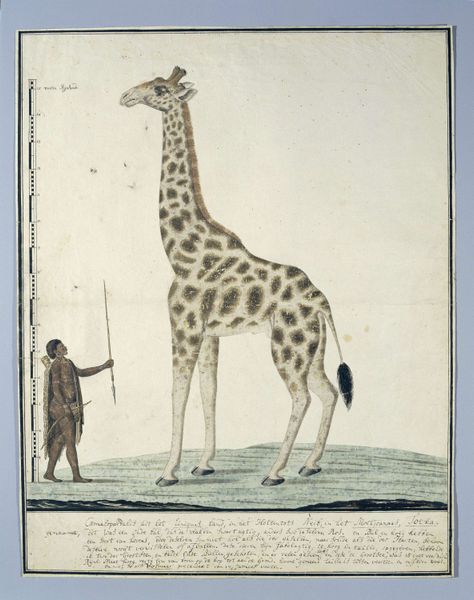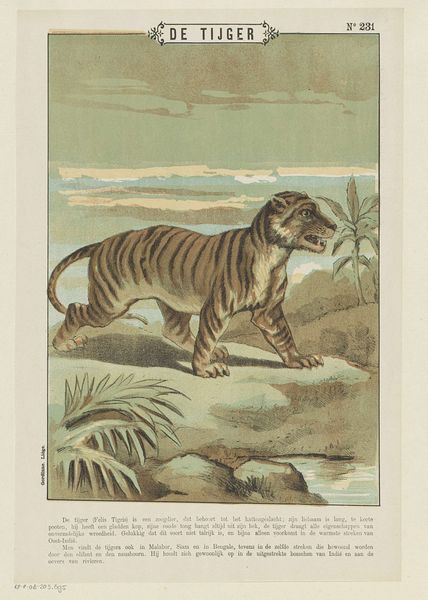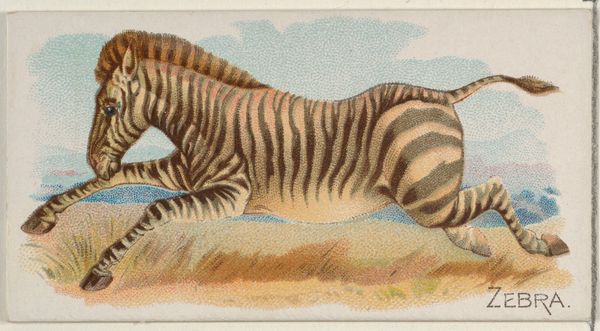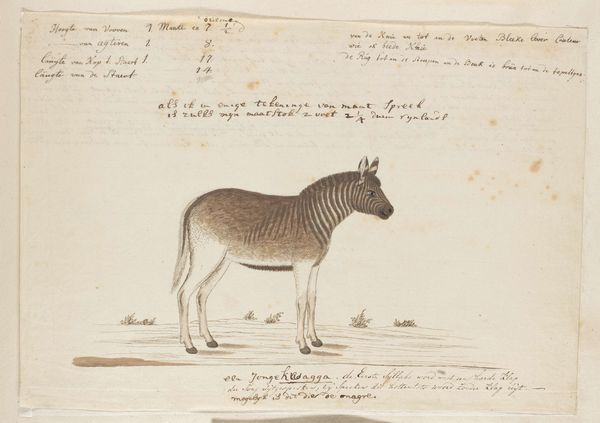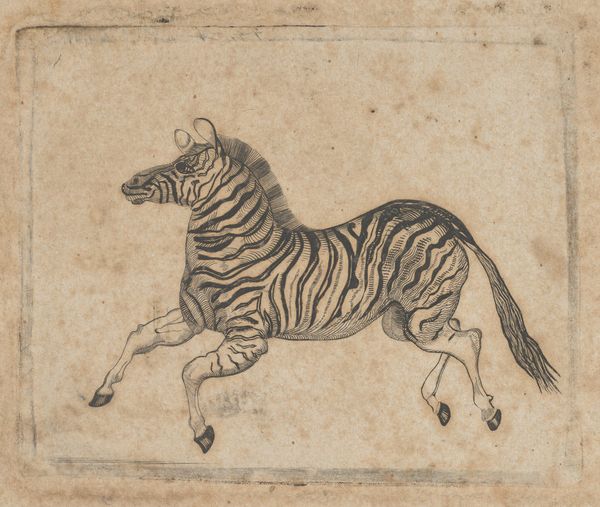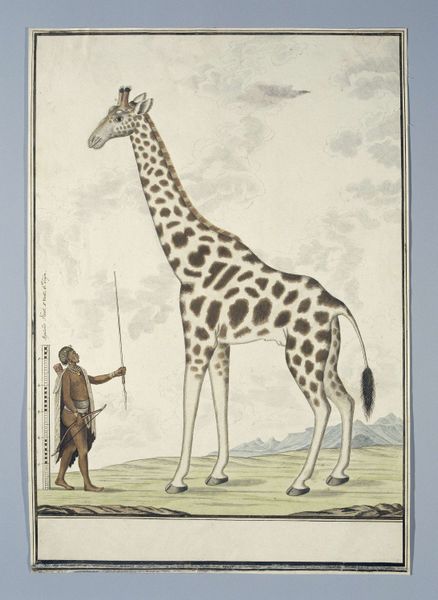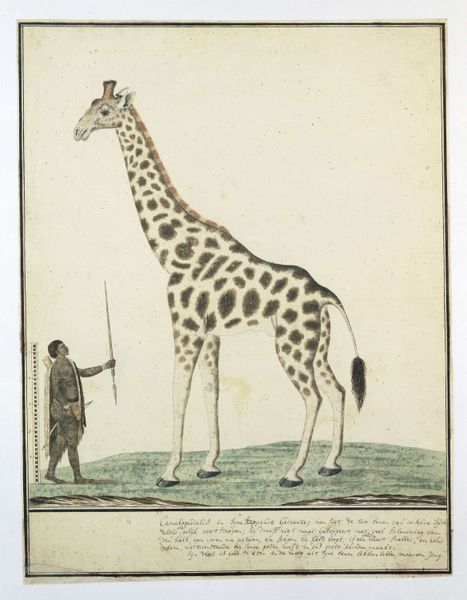
drawing, paper, watercolor
#
portrait
#
drawing
#
neoclassicism
#
landscape
#
paper
#
watercolor
#
coloured pencil
#
realism
Dimensions: height 660 mm, width 480 mm, height 261 mm, width 416 mm, height 241 mm, width 394 mm
Copyright: Rijks Museum: Open Domain
Curator: Robert Jacob Gordon created this watercolor and pencil drawing of the Equus quagga burchelli, or Burchell's Zebra, in 1790. Editor: What strikes me is the stillness of the composition, a rather formal portrait against an almost blank background. There's an incredible tension between scientific observation and artistic representation. Curator: Absolutely. Gordon, as a military man and explorer in South Africa, was deeply implicated in the colonial project. We need to acknowledge the violence inherent in these acts of observation and documentation; consider what it meant to capture, to classify, to possess through representation in the late 18th century. Editor: Indeed. And it's fascinating to consider the materiality of the artwork itself – watercolor on paper. These were portable, reproducible, acting as a form of commodity to document and classify resources, reducing the animal to raw data. Think about how those resources fuel empire-building, resource extraction and the industrial age that’s just around the corner. Curator: Precisely. These drawings are part of a visual archive complicit in systems of power. The "neutrality" of the scientific gaze is a fiction, as we consider the social construction of race through a lens informed by postcolonialism, and its place within a hierarchy. It's really difficult to look at the way that non-Western people and animals are rendered through the hands of colonial authority. Editor: I see your point. However, look at Gordon's hand: The execution of the stripes, the faint muscular structure underneath the pale body – it all showcases a real interest in technique and production value! The creation, distribution and consumption of that scientific knowledge have huge value when one analyzes them in this manner. Curator: I agree with that. It's also essential that when we confront artworks like these, we understand their historical production while challenging its perspective by understanding how we view these artworks now, informed by social justice. Editor: So in the end, understanding this zebra requires looking closely at the artist, at their society, at the means they used to picture their world? Curator: Yes, understanding both historical forces and critical theory so the viewers recognize a multitude of factors at play. Editor: Then, to properly comprehend it, there must also be attention and acknowledgement to how they are all connected during consumption.
Comments
No comments
Be the first to comment and join the conversation on the ultimate creative platform.

